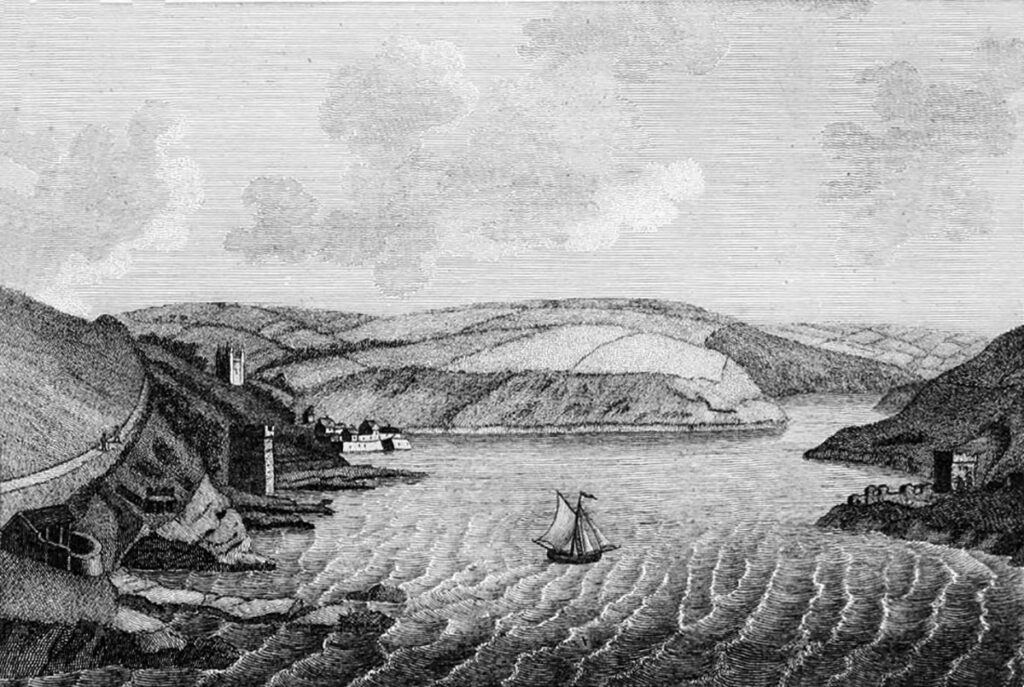
Polruan Blockhouse was a medieval artillery fortification built to protect Fowey harbour in Cornwall, working in combination with Fowey Blockhouse on the other side of the river. Although now ruined, it is accessible to visitors.
History
The town’s harbour was an important centre for trade, and ships reached it along the Fowey estuary. Two versions of the date for the construction of the blockhouses exist. The first is that French forces raided the town in 1457; soon after, in the reign Edward IV, two blockhouses were constructed on either side of the estuary to control access – Fowey and Polruan Blockhouse. A boom chain was strung between the fortifications to prevent enemy vessels progressing further into the harbour itself. An alternative version suggests that the two blockhouses and the chain were constructed around 1380 in response to the threat from Castille.

In either version of the blockhouse’s early history, in 1478 Edward ordered the removal of the chain – and the imprisonment of various local officials – in response to complaints of piracy around the Fowey region.
Polruan Blockhouse was a three-storey building, rectangular in shape, and constructed from slate rubble, with granite ashlar detailing. It had four small gunports, and a fireplace on the ground and first floors, presumably for use by the garrison as a living space.
Both the Fowey and Polruan blockhouses were superseded by St Catherine’s Castle, built between 1538 and 1540 after Henry VIII broke with the Papacy, resulting in an invasion threat from both France and the Holy Roman Emperor. The new castle was located high on the headland overlooking the entrance to the estuary itself, St Catherine’s Point, from which it took its name – St Catherine’s Castle.
Polruan Blockhouse saw service again during the English Civil War of the 1640s. In 1644, after the Royalist victory at the Battle of Lostwithiel in August, the Parliamentary forces under the Earl of Essex were forced to retreat. Their cavalry retreated east at speed, but Essex hoped to evacuate his slower moving infantry from Fowey harbour. Royalist forces pushed south, taking Polruan Blockhouse and gaining control of the estuary, ultimately forcing the surrender of most of the Parliamentary forces.
By 1897, the blockhouse was in poor condition and the writer Arthur Couch and a Mr Phelps campaigned to raise £86 to repair it. Further repairs were carried out by English Heritage and local organisations in 1987, at a cost of over £15,000.
Today, Polruan Blockhouse is owned by the Polruan Town Trust and open to visitors; it is protected under UK law as a Scheduled Monument and as a Grade II* Listed Building.
Visiting the blockhouse
Bibliography
- Cooper, Stephen Fowey (n.d.) The Lost Chain of Cornwall: The Blockhouses at Polruan and Fowey.
Attribution
The text of this page is licensed under under CC BY-NC 2.0. Images on this page include those from the Flickr website, as of 9 August 2023, and are attributed and licensed as follows: “Polruan Blockhouse” by R~P~M, released under CC BY-NC-ND 2.0.
